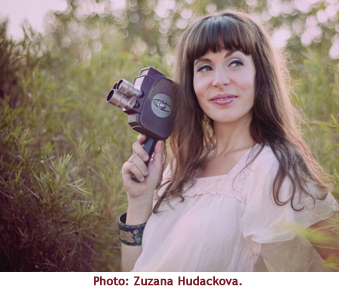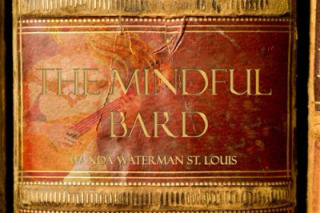 Elizabeth Shepherd is a jazz/soul pianist and singer. In 2006 her debut album, Start To Move, was voted one of the top jazz albums by listeners of the Gilles Peterson Show on BBC Radio Worldwide. She’s toured the world and shared the stage with Christian McBride, Victor Wooten, and Branford Marsalis. Her latest album, Rewind, showcases her skills as a musical arranger and stylist as she covers some carefully chosen tunes. She’ll be performing at the Montreal International Jazz Festival on June 30 and July 1 at the Savoy du Métropolis. Recently she took the time to share with Wanda Waterman about her past, her influences, and some little-known facts about the tradition of Salvation Army music.
Elizabeth Shepherd is a jazz/soul pianist and singer. In 2006 her debut album, Start To Move, was voted one of the top jazz albums by listeners of the Gilles Peterson Show on BBC Radio Worldwide. She’s toured the world and shared the stage with Christian McBride, Victor Wooten, and Branford Marsalis. Her latest album, Rewind, showcases her skills as a musical arranger and stylist as she covers some carefully chosen tunes. She’ll be performing at the Montreal International Jazz Festival on June 30 and July 1 at the Savoy du Métropolis. Recently she took the time to share with Wanda Waterman about her past, her influences, and some little-known facts about the tradition of Salvation Army music.
Music the Only Constant
Elizabeth Shepherd was born in Winnipeg to Salvation Army ministers. The family left Winnipeg when she was just a toddler, and every few years would move to different locations in Canada and France. Changing cities naturally meant changing schools, churches, friends, and conservatories.
This frequency of life change may be disrupting, but it can be mentally stimulating for a child, as long as there are some stable conditions. ?For me, music was the one constant,? says Elizabeth; ?that and my family. But I always felt happiest and most ?at home? in Paris.?
Musical Nurturing in the Salvation Army
The family was very musical. With four church events, choir, junior band, music theory lessons, and conservatory, and surrounded by excellent musicians (?incredibly supportive, generous, and for the most part devoid of ego, which is rare among musicians,? she says), Elizabeth grew up with unique opportunities for nurturing her love, and natural affinity for, music. ?If you were to draw a line from childhood into adulthood,? she adds, ?it makes perfect sense that music would still be such an integral part of my life.
?In terms of jazz, there was no jazz in the house growing up; our household was basically split between classical music and Salvation Army music. For those not in the know, Salvation Army music is comprised of?for the most part?highly sophisticated, long-form compositions for [a] 30-piece brass band, drawing on the romantic and contemporary classical traditions.?
Despite the wealth of musical exposure she had growing up, Elizabeth insists that her most moving musical experiences involved listening.
?From the time I was about two, I would spend hours listening to music with my father’s oversized headphones. Before I even had the language, I was drawn to and fascinated by the details, subtleties, and countermelodies that I could detect.?
The Jazz Shift
She also cites Kenneth Woodman, her piano teacher at McGill, as being one of her most important influences. ?It may have been timing, but he was the one who really encouraged me to pursue what I wanted (which was to switch from classical piano to jazz), and he helped me get there, even though he himself stated that he didn’t know much about jazz. What I took from that encounter was the importance of following my heart.?
What’s her jazz era? ?There are so many?the New Orleans roots are gloriously honest; the swing era feels great; be-bop is genius; the cool is just that. But I guess my favourite epoch (and this isn’t exclusive to jazz) is the 1970s (Headhunters, Miles, Herbie, Freddie Hubbard) era. Like so much in the ?70s, it felt like a time of really honest experimentation, where the mandate was to have fun, to dig deep and see where it would take you. There were no constraints on who the music was being made for, nothing overly cerebral. And I just love the aesthetic of the ?70s.?
On Arranging: Keep it Simple
?Generally speaking, I prefer to keep the arrangements fairly simple and minimal, in order to not take away from the song. I feel jazz musicians often run the risk of letting their own flashiness and musical prowess interfere with the very basic and skillful art of interpreting a song, and remaining true to the essence of that song.?
On Audiences
?I do have to say that my recent tour of Mexico left me with a love of Mexican audiences. There seems to be a real sense of authenticity and a lack of artifice and the kind of irony that plagues northerners. It’s not uncool to be sincere and to speak from the heart in Mexico, and that comes out in how the audience responds to the music. It’s beautiful.?
Creative Inspiration and Spiritual Growth
Elizabeth is inspired by Akira Kurosawa’s film Dreams and Wim Wenders? film Wings of Desire, as well as by Miles Davis’s Kind of Blue and the Tao te Ching. She’s also creatively influenced by her personal spirituality, which influences her approach to her art.
?I believe in God, as mother. She’s good to me and keeps me going. I’m aware of how dysfunctional and unjust our world is, and I feel the need to use my musical platform to try to bring some joy?something more beautiful human than the dominant madness.?
What’s next? ?Musically, three albums?I’ve almost finished recording one, I’m partway through writing the other, and the third is still at the stage of idea?and personally, to find more balance.?
Wanda also penned the poems for the artist book They Tell My Tale to Children Now to Help Them to be Good, a collection of meditations on fairy tales, illustrated by artist Susan Malmstrom.


